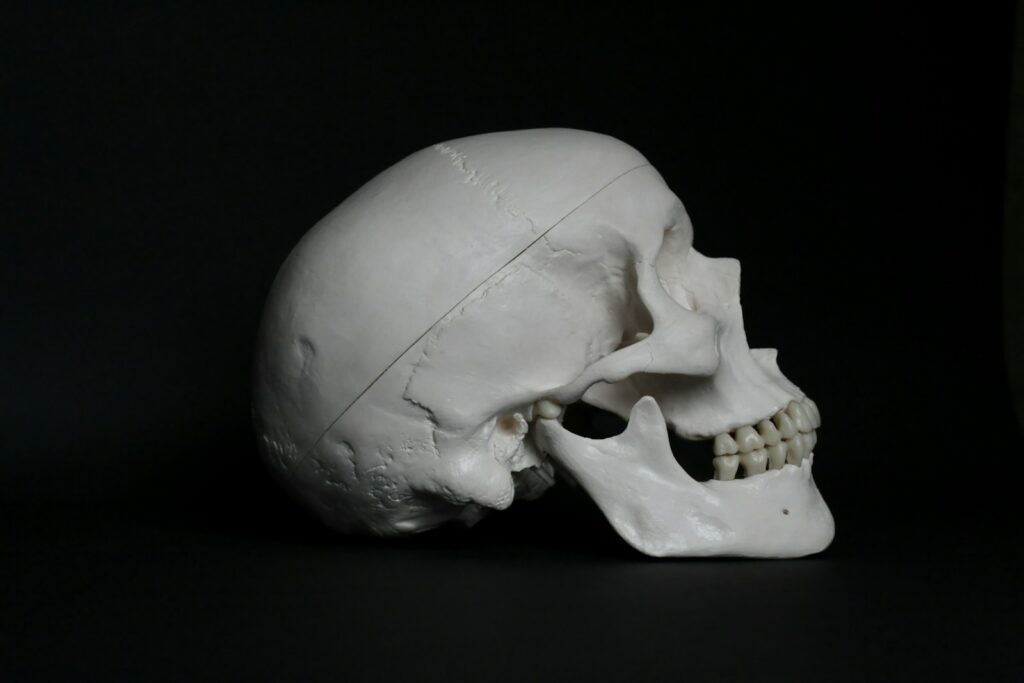When someone chooses cremation or aquamation for the final disposition of their remains, a common question that arises is: What happens to the bones? Both methods of body disposition involve the reduction of the body to basic elements, but they do so in very different ways. This article explores the details of what happens to bones after both cremation and aquamation, shedding light on the process, handling, and final outcome.
Bone Processing After Cremation
Cremation is a process that uses high heat to reduce a human body to ashes. However, it’s not quite as simple as turning the entire body into ash. Bones are not completely destroyed by the flames; rather, they undergo a specific post-cremation process.
The Cremation Process
Cremation takes place in a chamber heated to approximately 1,400 to 2,000°F (760-1,093°C). Over the course of about two to three hours, the soft tissues of the body are incinerated, leaving behind primarily gases, ash, and bone fragments. While most of the organic material is reduced to gases and exits the chamber through an exhaust system, the bones remain, albeit in a brittle and fragile state.
Processing the Bones After Cremation
Once the cremation process is complete, the remaining bones are left in the chamber along with some ash. These bones, though reduced in size and density, are still present and need to be further processed.
- Metal Removal:
- During cremation, any metal objects (like screws, pins, or dental fillings) may remain in the chamber. These are typically removed with magnets or manually. The metals are often recycled or discarded, depending on the facility’s practices.
- Bone Pulverization:
- The remaining bone fragments are removed from the cremation chamber and placed in a machine called a cremulator. This machine grinds the bones into a fine, sand-like powder, typically referred to as “ashes” or cremated remains. The remains are now ready to be placed into an urn or other container.
Appearance of Cremated Remains
The ashes, though commonly referred to as “ashes,” are primarily made up of the pulverized bone fragments. They are usually gray or white in color, and the texture is coarse, similar to crushed seashells. The volume of the ashes can vary, but they typically weigh between three to nine pounds, depending on the size and bone density of the person.
Bone Processing After Aquamation
Aquamation, also known as alkaline hydrolysis or water cremation, is a gentler alternative to traditional flame cremation. This process uses water, heat, and alkaline chemicals to break down the body. The remaining bones are processed differently, and the outcome is often more eco-friendly and visually distinct from cremation.
The Aquamation Process
Aquamation involves placing the body in a pressurized chamber filled with a water and alkaline solution (usually potassium hydroxide). The chamber is heated to around 320-350°F (160-177°C), and the process lasts for about four to six hours. During this time, the water and alkali dissolve the soft tissues of the body, leaving only the bones behind.
Unlike flame cremation, aquamation does not use combustion, so there is no burning of the bones or soft tissues. Instead, the body undergoes a process that mimics the natural decomposition that occurs in soil, just much more quickly.
Processing the Bones After Aquamation
At the end of the aquamation process, the bones are left intact but are much softer and more brittle due to the absence of extreme heat.
- Bone Pulverization:
- After aquamation, the bones are white and fragile. They are dried and then placed into a machine similar to a cremulator, where they are ground into a fine powder. This powder is generally finer and whiter than that resulting from flame cremation, due to the difference in processing methods and the absence of charring.
- Metal Removal:
- Like in flame cremation, any metal implants or prosthetics remain after aquamation and are removed from the bone fragments. These metals are often in better condition than those retrieved from flame cremation, as they haven’t been subjected to high temperatures.
Appearance of Aquamated Remains
The bone remains from aquamation tend to be whiter and finer in texture compared to flame cremation remains. They are sometimes described as “flour-like,” and their lighter color is due to the absence of burning. The weight of the remains is similar to those from cremation, though some reports suggest they may be slightly heavier due to the less intense breakdown process.
Environmental Considerations in Bone Processing
Both cremation and aquamation involve the processing of bones, but the environmental impacts of each method differ significantly.
- Cremation: The process of flame cremation results in emissions of carbon dioxide, mercury (if dental fillings are present), and other pollutants. Additionally, the energy required to maintain the high temperatures in the cremation chamber adds to its environmental footprint. The process of bone pulverization and the removal of metals further contribute to energy use.
- Aquamation: Aquamation is considered a more eco-friendly alternative. It uses much less energy than flame cremation and does not emit harmful gases. The liquid effluent left after the process is neutralized and can often be safely disposed of through wastewater systems. Additionally, since the bones aren’t burned, there is less environmental impact from processing the remains.
Handling of Cremated and Aquamated Remains
In both cremation and aquamation, after the bone fragments have been pulverized into ashes, the remains are typically placed into an urn or container to be returned to the family. Families may choose to scatter the ashes, keep them in an urn, or incorporate them into memorial items. Funeral homes usually offer guidance on how to handle the remains based on family preferences or cultural practices.

